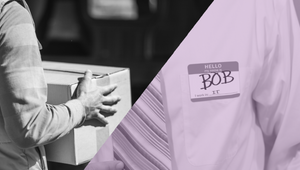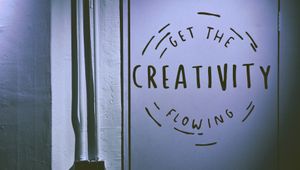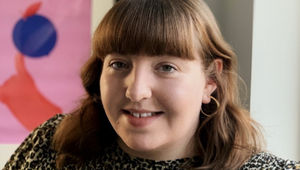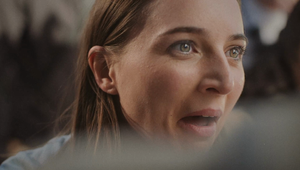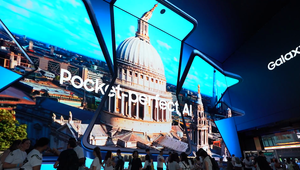
What’s in a Name? For Trans People, Quite a Lot

Channel 4’s Diversity in Advertising Award has been incentivising some of the UK’s most groundbreaking campaigns for four years now. Each year the national broadcaster promises to give £1 million worth of commercial airtime for the most creative approach to a broad diversity subject for a brand. This year’s theme challenged the lack of representation and stereotyping of the LGBT+ community in advertising. This came following a study that revealed only 0.3% of TV adverts feature a transgender person, despite the community making up at least an estimated 1% of the population.
The winning entry for Starbucks by Iris celebrates the life-changing moment that faces some transgender and gender-diverse people as they debut their new name in public. It is inspired by real life experiences of individuals who find Starbucks stores to be a safe space, where their new name is accepted and they are recognised as who they really are.
The beautiful film, directed by Sweetshop’s Nicolas Jack Davies, depicts ‘James’ who is transitioning but faces everyday challenges because he does not identify with his birth name, ‘Jemma’. But it’s when he goes to a Starbucks that he finds acceptance, through the simple act of asking to have the name James written on a cup and get called out by a barista.
As part of its winning entry, Starbucks is also raising a minimum of £100,000 for the UK charity Mermaids, which supports gender-diverse children, young people and their families.
In the broader campaign, Starbucks is also telling real-life transgender name stories through its portrait series.
LBB’s Alex Reeves turned to Iris associate creative director Eli Vasiliou to find out what it took to create the campaign.
LBB> What was the starting point for the campaign?
Eli> When they announced this year’s C4 Diversity Award in Advertising would focus on LGBT+ representation, it seemed like a great brief for Starbucks. Over the last few years, the brand’s suffered from a lot of negative press and they’ve become this Big Bad Corporate in many people’s eyes. But actually, they’re a very progressive company and have done a lot to support the LGBT+ community over the years, like sponsoring Pride and even having healthcare that covers medical transition for trans employees in the States. So, as a brand they had the right to play in this space, and as a client, they had the appetite to go for it!
LBB> When did you land on the idea of names and the struggle trans people have with them?
Eli> If there’s ever an argument for the importance of a great creative brief, it’s this campaign. Our strategist Raj Thambirajah hit upon a little piece of gold – the symbol of welcome and acceptance that Starbucks is famous for – writing names on cups. The concept of seeing people as names, not labels, was an exciting jumping-off point. It got us thinking about how important names are to our identities, and reminded us of a podcast we’d recently listened to, where people told the stories behind their names, some of whom were trans and had picked names for themselves. That was a lightbulb moment – could we tell the stories behind the names on the cups? What would it be like to try out a name you’d chosen for yourself, in Starbucks?
Then, as we dug into the idea, we found videos of trans YouTubers talking about how they’d done exactly this – it was amazing validation of the script and we knew we’d hit upon something truly authentic.
LBB> What sort of insights and experiences did you draw on when you were writing the campaign?
Eli> From the start we knew we had to get this right. We’ve seen how rainbow-washing has affected the LGBT+ community – and damaged brands. Above all, we wanted this to be authentic. So we were very aware of the dangers of being a predominantly cis team tackling important trans issues. We wanted to work very closely with the LGBT+ community and called on friends and contacts, as well as people in the agency, to help us. Once we had a skeleton script, we consulted with a panel of trans friends and had open conversations about it. This helped us develop the story. For example, the scene where James is deadnamed by their Dad – this was added in after our panel talked about the difficulties of managing their transition with their families. This was the most acute part of their experience, so we wrote it in as the emotional climax in the story.
LBB> How did you get involved with Mermaids?
Eli> This is a great example of the collaboration that was the making of this campaign – Owen from the tech team at Iris is a Mermaids supporter and heard we were working on this idea. He suggested a partnership and with the obvious synergy between the Starbucks logo and the Mermaids charity, it was another moment when the stars aligned. With the great work Mermaids do, it couldn’t have been more perfect! They’ve been invaluable consultants throughout, giving us info, support, pointing us back in the right direction whenever we risked going off-course, and helping us cast the campaign.
LBB> How did you cast James? And how did he approach the shoot? I imagine it chimes with his real life experiences so must have been hard!
Eli> There was never any question that we’d not cast a trans actor in the role. Finding someone who could bring their own experiences and character to the part was really important to us and the director, Nick [Jack Davies]. He spent most of the casting time getting to know the actors and immersing himself in their worlds.
The first time we, as the agency team, saw Naissa’s headshot, the room went quiet. He has an incredible look and presence. And seeing him on the casting tapes, we were struck by the subtlety and vulnerability in his performance. With Naissa, it’s all in the eyes. He was the perfect person to play James – a character experiencing deep and complex emotions, conveyed through the most understated reactions.
LBB> How did you gather other people's name stories and sift through them?
Eli> We met and spoke to dozens and dozens of people to find the people for our moving portraits series. There are so many stories out there – some are funny and entertaining, others are uplifting, some were really heart-breaking. We wanted to show different sides of the experience of choosing a name across the series, and it was really hard to choose our final four.
Shooting the portraits was so much fun – we got to know a brilliant bunch of people who were all really supportive of each other and passionate about the project, and we’re very grateful to them for opening up to us.
LBB> Have you had much reaction to the campaign yet? I can't imagine the internet stayed quiet on this issue being addressed by Starbucks...
Eli> We’ve been overwhelmed by the response to the campaign so far. Our biggest fear was getting it wrong in the eyes of the trans community, so the outpouring of support has been incredible. The most lovely thing is seeing tweets from all over the world from people who – just like James – used Starbucks as a safe place to debut their chosen names. Some have even posted photos of the cups they’ve kept as a momento.
LBB> Anything else you'd like to add?
Eli> A campaign like this can only happen with a truly brave client. ‘What’s your name?’ is a benchmark for how clients and agencies should work together and shows what you can achieve when you share an ambition and truly trust each other. The team at Starbucks bought into an idea and all they’ve done is add to it and make it stronger and stronger.
This campaign has brought out the best in all of us and we couldn’t be more proud.









